4. Sustainable real property
4.1 MANAGING CONTAMINATED SITES
Defence manages its contaminated sites consistent with Treasury Board policy, by prioritizing sites based on human health and environmental risks using approved criteria, developing and implementing management strategies, executing projects, and reporting on results. Restoring lands impacted by past practices helps us understand and avoid such impacts in the future. We have made steady progress and in 2019-20, we reduced our contaminated sites liability by 16%. Defence will continue to leverage the Federal Contaminated Sites Action Plan to clean up contaminated sites to reduce its environmental liability related to real property.
VALCARTIER RESEARCH CENTRE CLEANUP
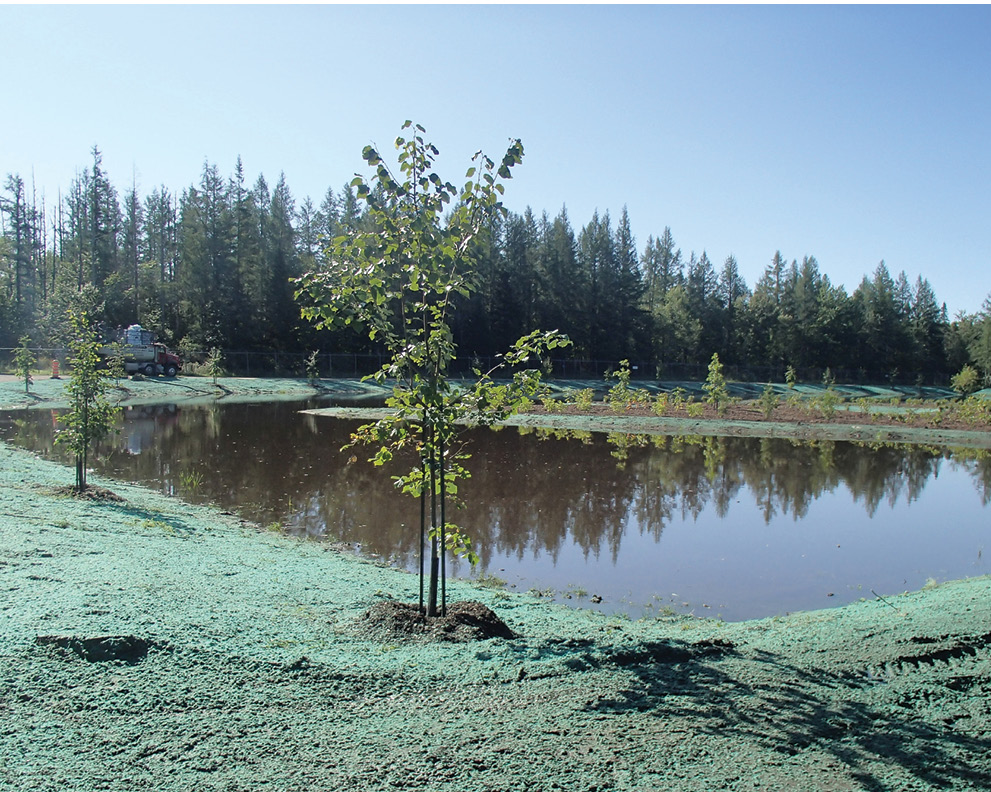
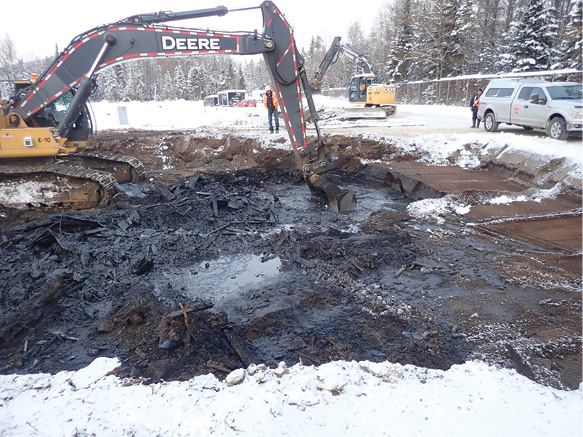
The Valcartier Research Centre provides the Canadian Armed Forces with scientific and technical services. Three dumpsites operated on the site from 1960 to 1990. In 2020, Defence completed a remediation project that removed more than 25,000 m3 of waste from one of the dumpsites and converted it into a retention pond. The other dumpsites were properly shaped and covered with impermeable membranes and clean soils. In addition to reducing contamination, the project will save over 160 tonnes of GHG emissions by minimizing waste transport and due to the carbon-sink effect of the new retention pond and wetland on the site.
TARGET 12 Reduce DND’s contaminated sites liability by an average of 10% per year by 2023
4.2 MANAGING TRAINING AREAS
Training and readiness exercises are necessary for a combat ready force at sea, on land, and in the air. While ensuring our training areas are effective for preparing our forces, Defence understands that they also need to be managed sustainably.
The CA has made significant strides in assessing and monitoring the sustainability of land-based ranges and training areas. To date, the CA has assessed all of the small arms classification ranges identified within the Canadian Forces Range Information System to evaluate how natural conditions at each range location will impact the ability of lead and other metals to migrate in the environment. This type of information will allow the CAF to make informed sustainable decisions regarding range design and range management. The CA also uses the Range and Training Area Sustainment System (RTASS) to assess the environmental impacts of its range activities and to select, monitor and report on site-specific indicators of range sustainability.
The RCN’s Atlantic and Pacific operational range and training areas are paramount to Defence’s ability to maintain a combat-ready force at sea. These areas are home to several marine species-at-risk, as well as critical marine habitat and protected areas. Defence will continue to assess, manage, monitor and minimize the environmental effects of military training and testing within our maritime range and training areas. Comprehensive maritime range and training area management plans will outline key activities undertaken in the maritime ranges, including baseline information, identification and implementation of monitoring objectives and additional research requirements. The RCN will collaborate with other federal partners to carry out activities in a way that meets national conservation objectives.
CUTLASS FURY 19 – MINIMIZING IMPACTS IN TRAINING AREAS
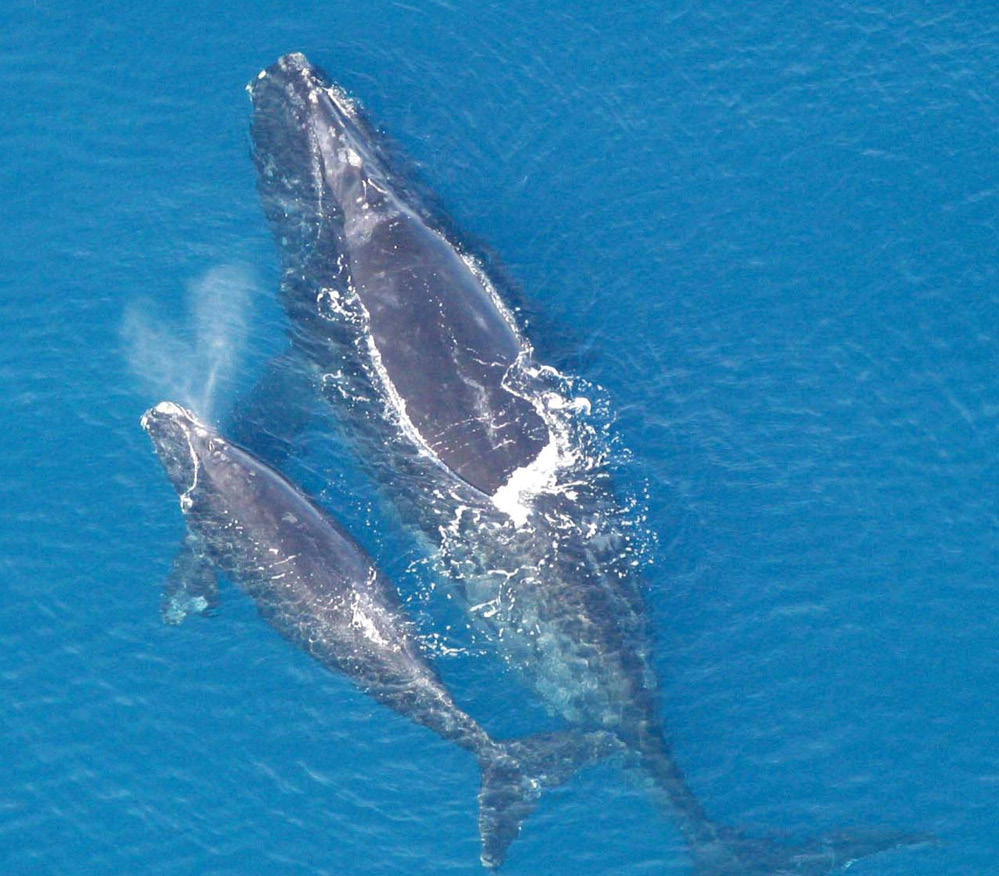
The RCN collaborates with NATO allies to conduct international exercises in marine locations throughout the world. The RCN hosts the CUTLASS FURY exercise every two years in the North Atlantic Ocean. Environmental and species considerations helped shape the locations for this exercise. The RCN worked with other government departments to avoid known locations of marine mammal and turtle species, including the endangered North Atlantic Right Whale.
4.3 PROTECTING FLORA AND FAUNA
Defence administers large tracts of land across Canada that provide habitat for many species of flora and fauna, including those considered endangered or at risk. Through numerous studies and surveys, Defence maintains a solid understanding of the flora and fauna on Defence establishments. It considers this information together with relevant federal regulations when planning military training, developing land use plans, and maintaining training areas to avoid or minimize impacts. Defence is centralizing information that was previously maintained at individual Defence establishments into a national geographic information system to enable national planning that will reduce or avoid impacts of Defence activities on the environment.
Defence works with federal partners to develop national recovery documents that outline the status of species and potential threats. Defence develops species-at-risk work plans for each Defence establishment that outline measures we will take to protect species and their habitat. From 2017 to 2020, DND developed work plans for the majority of land-based establishments with at least one species-at-risk on site.
In 2019, DND, ECCC, and the Province of Manitoba designated CFB Shilo as the first Defence establishment recognized in Canada as an “other effective area-based conservation measure” (OECM). This supports the government of Canada’s commitment to conserve at least 17% of terrestrial areas and inland waters, and 10% of marine waters by 2020 through a network of protected areas and OECMs. OECMs are areas that are being used for a specific purpose, such as our military lands and waters, but that have a secondary goal of conserving biodiversity. Recognizing an area as an OECM is voluntary. Defence bases and wings often have conditions that promote high biodiversity because of their size, location, and management practices. We will continue to work with ECCC to consider other Defence establishments for OECM recognition where compatible with current and planned military land use.
TARGET 13 Implement a centralized geographic information system (GIS) tool for species at risk information and capture 40% of historic data by 2023
CONTROLLING AQUATIC INVASIVE SPECIES
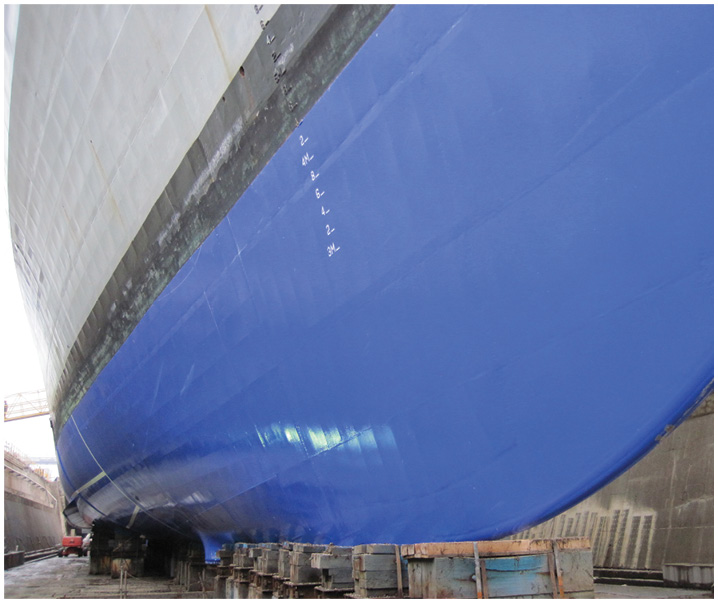
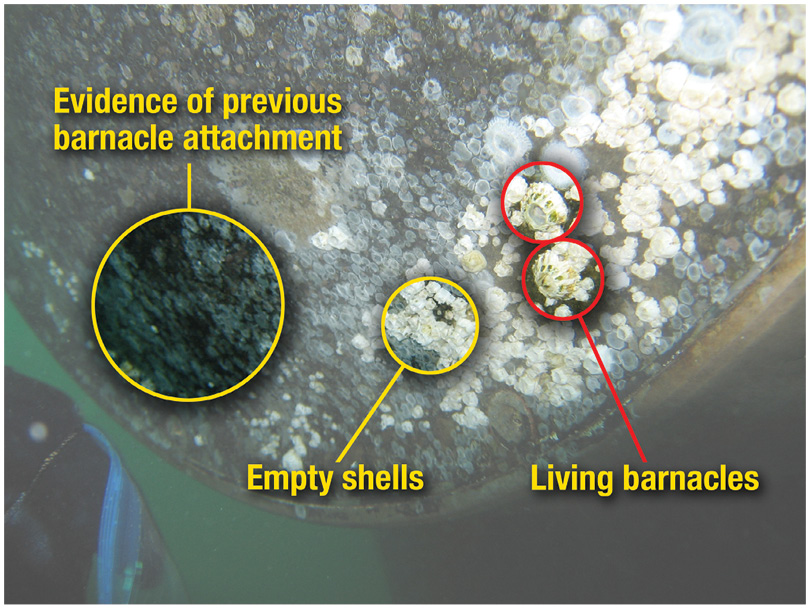
La Défense travaille avec le ministère des Pêches et des Océans afin de procéder à des études de cas sur les risques potentiels associés à des espèces envahissantes. Des capteurs de données sur les navires de la classe Halifax sont utilisés afin d’analyser les répercussions sur le rendement imputables à l’encrassement de la coque. Ces données sont utilisées afin d’élaborer des stratégies pour atténuer les répercussions des espèces aquatiques envahissantes, et ce, dans le but de protéger la biodiversité marine du Canada. La gestion de l’encrassement de la coque appuie également les cibles relatives à l’efficacité énergétique et aux émissions en améliorant le profil hydrodynamique de nos parcs de navires.
4.4 MANAGING HAZARDOUS SUBSTANCES
Defence uses a high volume of hazardous substances such as ammunition, explosives, gases, and flammable liquids and has a responsibility to manage them properly to protect the safety of personnel and the environment. Defence is committed to managing hazardous materials with care throughout their lifecycle, reducing their use where and when possible, and to seek out less hazardous alternative substances that meet Defence needs. Defence is committed to abiding by applicable laws and regulations, both domestic and international, to prevent the use of prohibited hazardous substances in Canada and on overseas deployments.
In 2019, Defence created a task force to look at how we manage per- and polyfluoroalkyl substances (PFAS), and to find fluorine-free foams that meet industry standards, regulations, and Defence needs. To prevent contamination of the environment, we published guidance on the proper use of Class B firefighting foams. Defence will continue to investigate PFAS alternatives and will develop a project plan, including costs, timelines, and alternative products to eliminate PFAS Class B foam at Defence locations.
4.5 WASTE MANAGEMENT
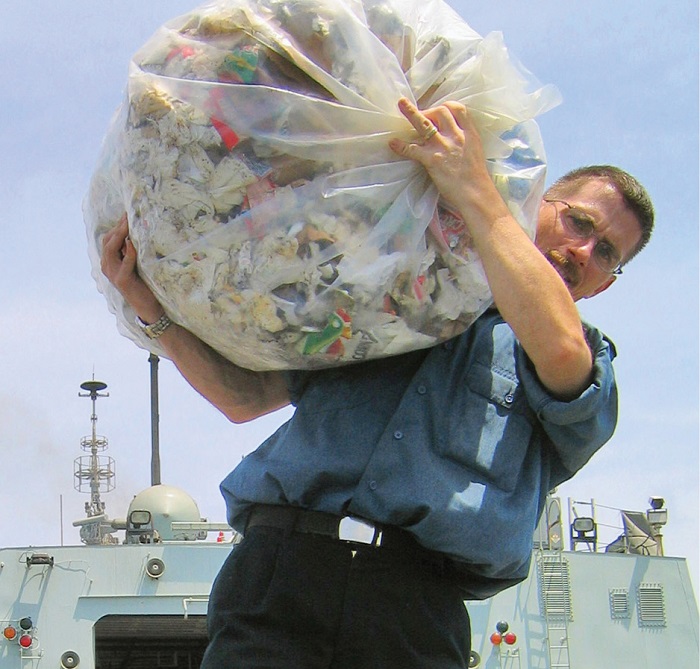
Reducing our impact on natural resources and communities is important. The extensive operational capacity and real property portfolio of the Defence team results in a large amount of waste. Wherever possible, Defence will reduce, reuse, recycle and recover waste to increase resource conservation and reduce the environmental impact of Defence operations. Defence will work to reduce and divert recyclable materials from landfills, in particular recyclable plastics in support of the Ocean Plastics Charter and food waste in support of the UN 2030 Agenda. An important first step is to create a baseline for non-hazardous waste using data from representative bases and wings, with a focus on single-use plastics and food waste, before developing a reduction and diversion plan. The Defence policy for event hospitality has already been updated to promote the reduction of single-use plastic products and packaging materials.
We will also develop, update and implement policies, such as the Green Building Directive, to require the diversion of solid non-hazardous construction waste from landfills. Contractors will be required to develop comprehensive waste-management plans that reuse building materials as much as possible and dispose of non-reusable materials safely.
TARGET 15 Establish a baseline for non-hazardous waste and develop a reduction and diversion plan by 2023
4.6 REDUCING THE ENVIRONMENTAL FOOTPRINT OF THE INFRASTRUCTURE PORTFOLIO
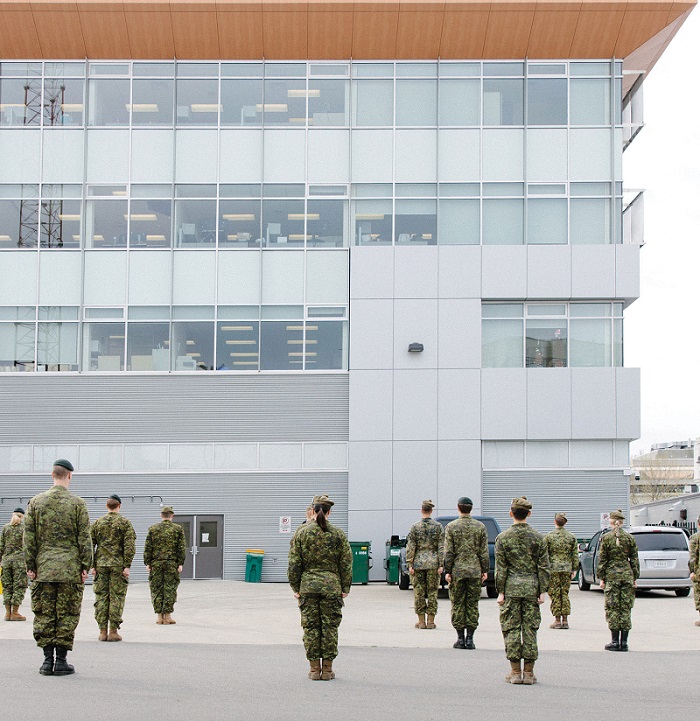
The Defence team manages the largest infrastructure portfolio ($26 billion) in the federal government, including over 20,000 buildings, 5,500 kilometers of roads and 3,000 kilometers of water works. However, the real property portfolio is facing a considerable range of new and evolving pressures. According to a recent review led by Treasury Board Secretariat, all custodial departments face similar pressures brought on by years of underinvestment in federal infrastructure. Improvements are needed to comply with health and safety, workplace risk mitigation and environmental sustainability standards while addressing the demand for infrastructure to support operational requirements in the Arctic, for continental defence, to avoid climate change impacts, and to support the GoC’s Indigenous Reconciliation agenda. The Defence Real Property Portfolio Strategy will provide new vision, guiding principles, and key initiatives to align the portfolio with operational requirements in an affordable, efficient and sustainable manner that addresses legal compliance risks and ensures our infrastructure is resilient and able to adapt to climate change.
Defence will continue to plan, construct, maintain, repair, renovate, and divest of facilities to support military readiness, maintain efficiency, and reduce its environmental footprint. Reducing environmental impacts leads to a leaner, more affordable real property portfolio, and decreases long-term costs.